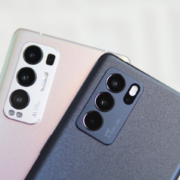Samsung Electronics has marked a pivotal moment in the next-generation mobile communication landscape with the release of its 6G white paper, “AI-Native and Sustainable Communication.” Published on February 6, the document explores emerging trends and strategic directions for future mobile networks, addressing the growing demands of users and operators, the rise of AI, and evolving industry standards. It emphasises the need for innovative solutions to handle increasing data traffic and improve user experience in the 6G era, while also anticipating transformative services like immersive reality, digital twins, and ubiquitous connectivity.
The white paper identifies four key themes: AI Integration, Energy Efficiency, Coverage Expansion, and Next-Generation Security. Samsung aims to embed advanced AI technologies across its communication systems to optimise network performance, predict congestion, automate maintenance, and deliver personalised, sustainable user experiences. Charlie Zhang, Senior VP at Samsung Research’s Next-Generation Communication Research Center, emphasised the company’s dedication, stating that as 6G standardisation progresses, their priority is to create technologies that meet evolving market demands. This underscores Samsung’s proactive role in shaping the future of global telecommunications.
The evolution from 1G to 5G has brought faster speeds, lower latency, and the ability to connect more devices, enabling advancements like IoT and smart cities. As the industry transitions to 6G, sustainability is becoming a core focus, reflecting broader efforts to reduce carbon footprints and promote eco-friendly innovations. Standardisation, led by organisations like the ITU and 3GPP, ensures global interoperability, and Samsung’s white paper represents an early step in this process. By integrating sustainability and AI, Samsung is positioning itself as a leader in the race for 6G, driving both technological and environmental progress.











